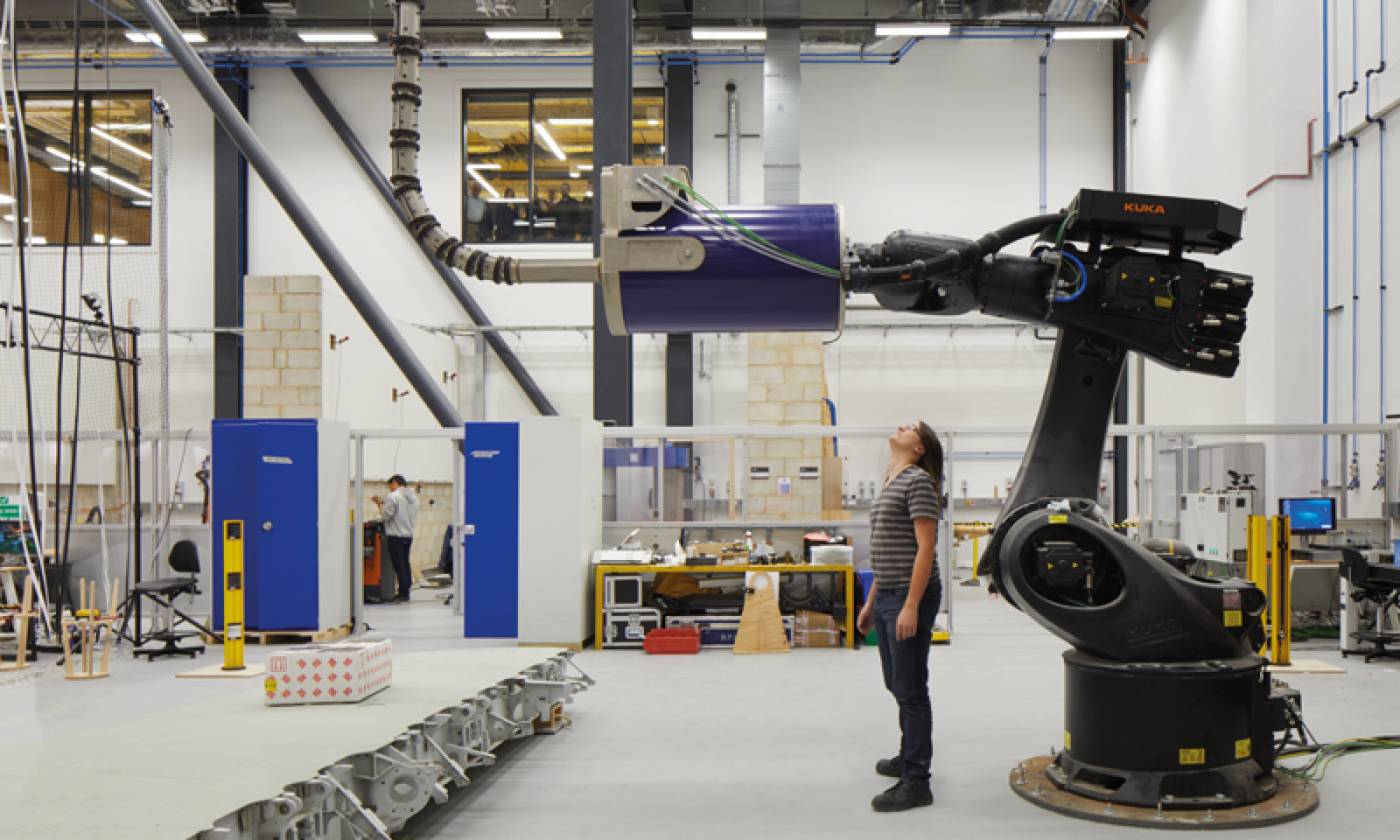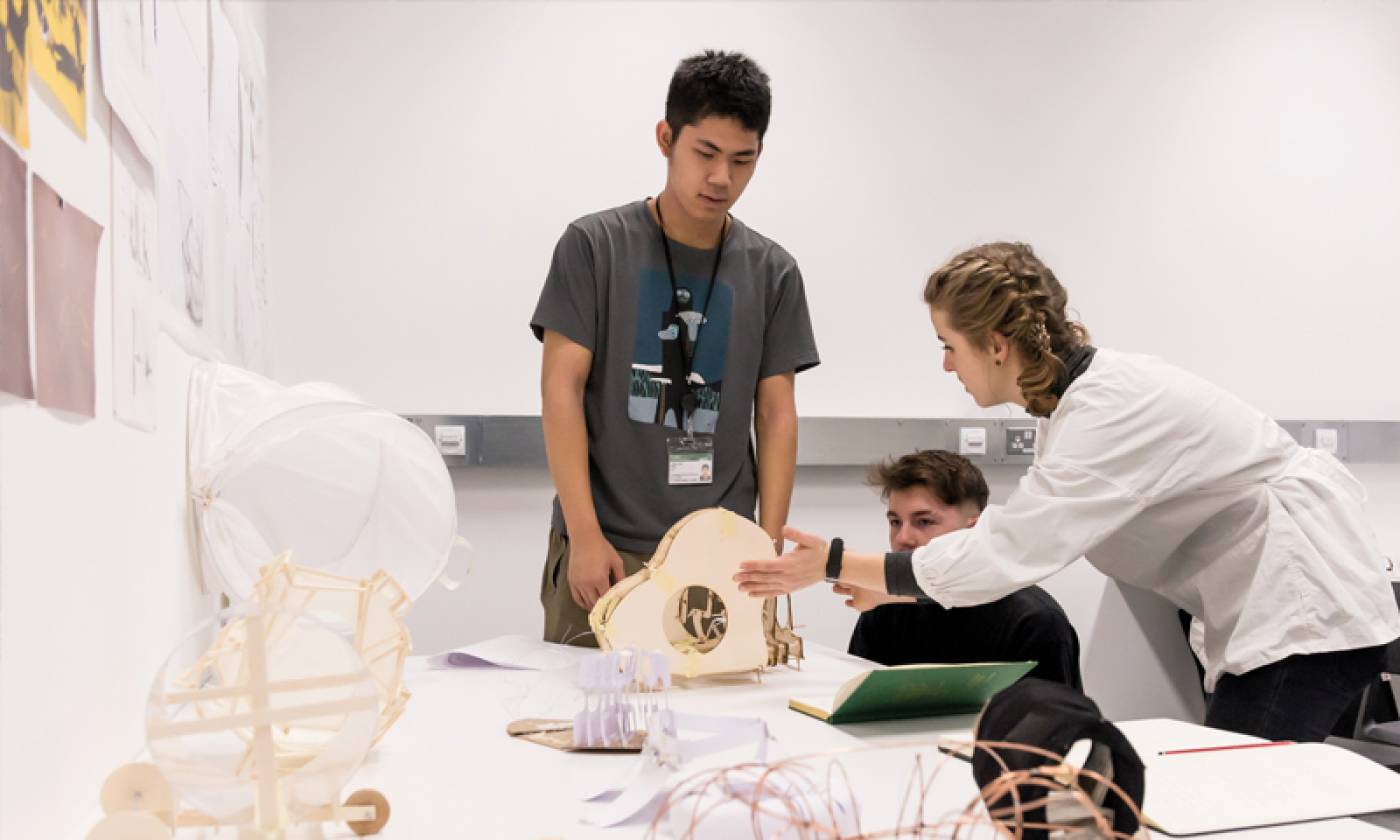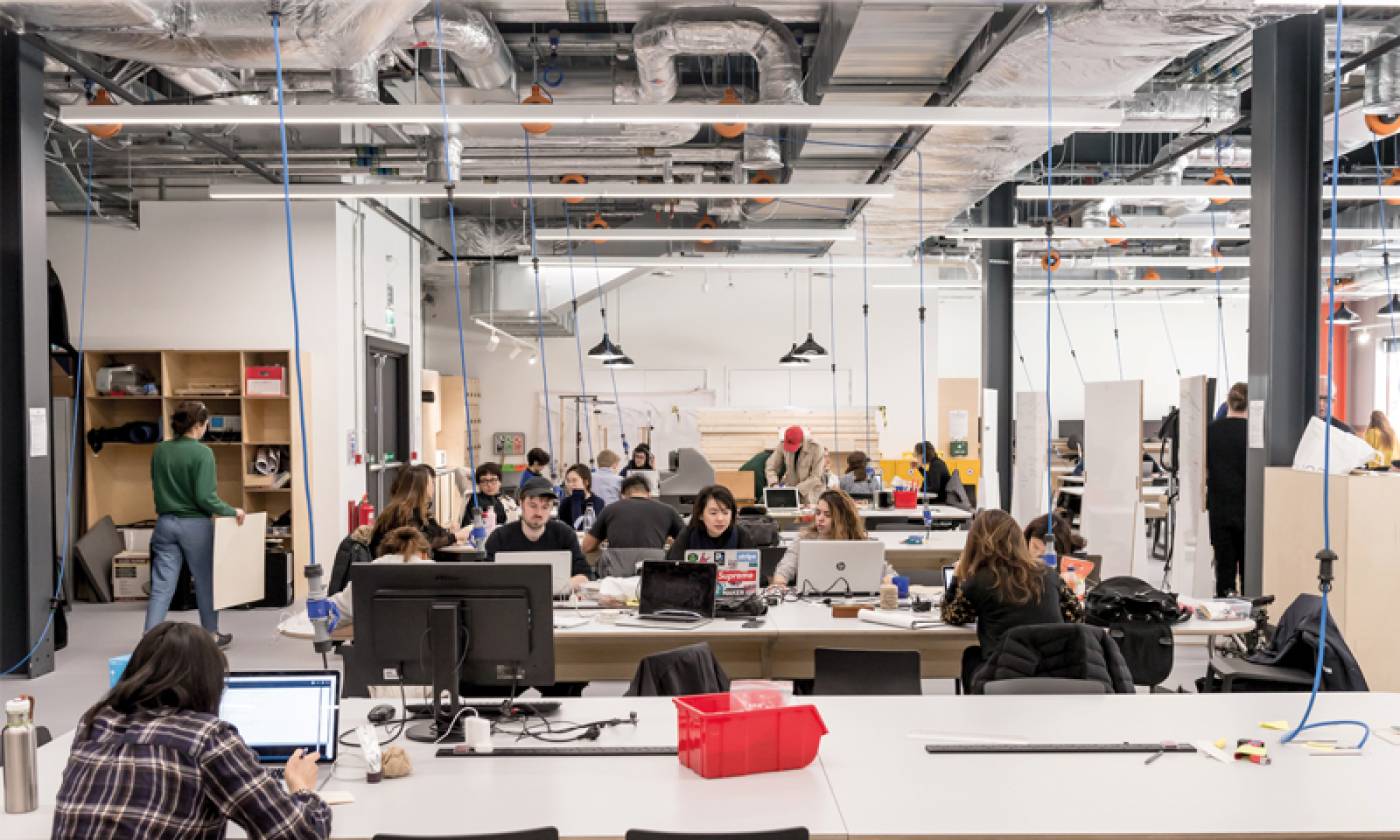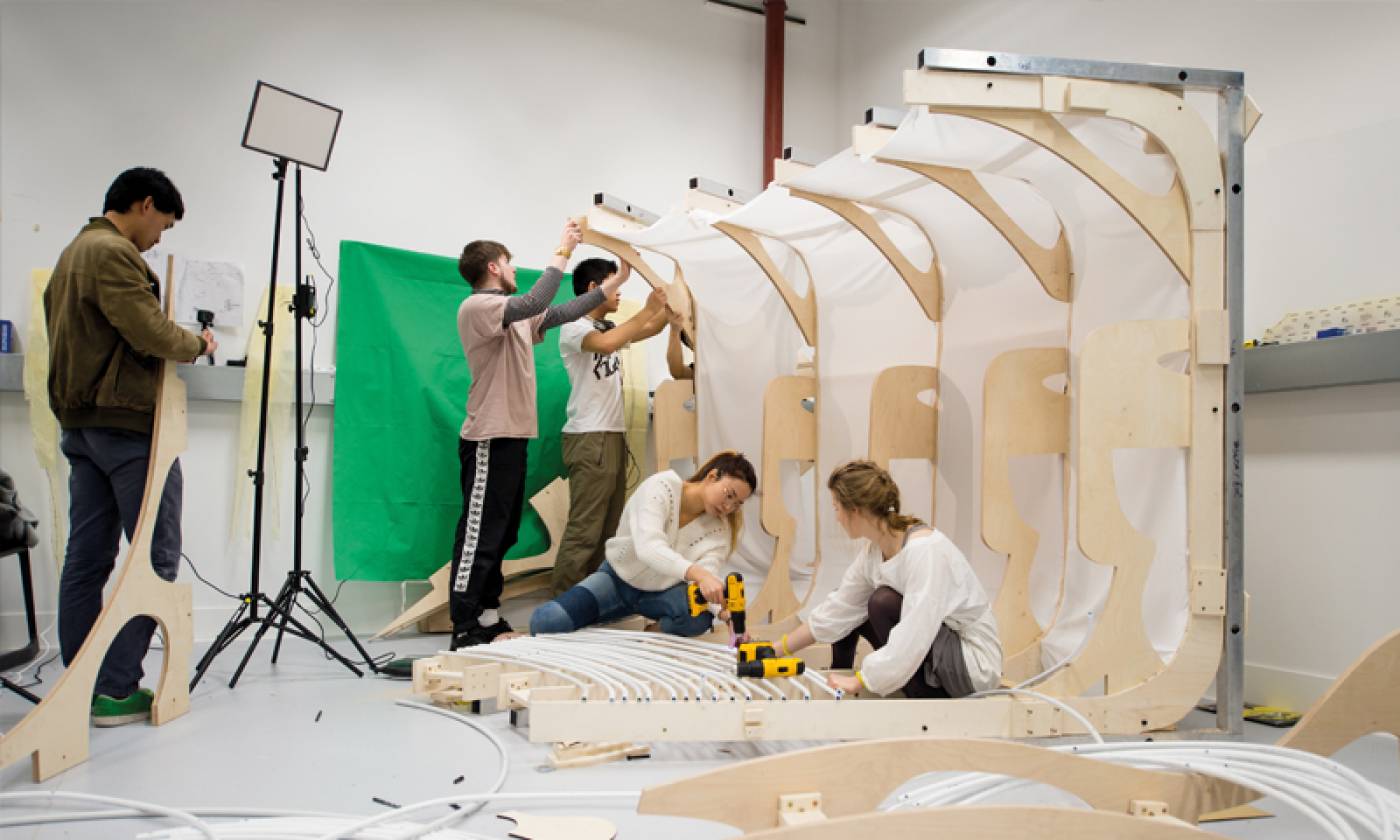A little over a year ago, The Bartlett announced its arrival in east London with a new building and four pioneering architecture courses. we paid a visit to see how students and staff are settling in.




From Hackney Wick station, it’s a short stroll along a canal towpath, with its appealingly shabby house boats, to The Bartlett’s new outpost at Here East. Alternatively, students, staff and visitors arriving via Stratford can ape Google’s Silicon Valley commuters and use the free shuttle bus. Either way, on a sunny afternoon, Here East in Queen Elizabeth Olympic Park feels like an academic’s idyll: a big new building surrounded by loads of space and tranquility. But spaciousness and peace come courtesy of its remoteness, because Here East is more Wild West than West End.
The Hawkins\Brown-designed scheme is a collaboration between The Bartlett and UCL’s Faculty of Engineering Sciences and is the university’s first presence in the Park, meaning that, while it coexists with a diverse mix of other organisations in the Here East cluster, its surrounding neighbours are yet to start rising out of the ground.
Despite the empty plots around them, many students have the vision to see the area’s potential: “We are the first generation, so there’s more freedom to take ownership,” says Changhao Xin, a Master’s student in Design for Manufacture.
“We have liberty because it’s a big open space. As a whole complex, I can imagine it as a self-sufficient city
Kaia Wells, an MEng Engineering and Architectural Design student, echoes this: “We have liberty because it’s a big open space. As a whole complex, I can imagine it as a self-sufficient city, with cafés, businesses, universities, and its own bus system!” But pioneering can be a lonesome existence. “It doesn’t have the hustle and bustle of a central location,” admits Fiona Zisch, a Teaching Fellow on the Design for Performance and Interaction Master’s programme.
Fluid dynamics
It is up to the teaching staff to make the connection with 22 Gordon Street – The Bartlett School of Architecture’s HQ – as seamless as possible. No mean feat, when it comes to logistics. Luke Olsen, Senior Teaching Fellow at the School of Architecture, describes his efforts to get the timetabling to work as ‘balletic’. “We don’t travel between the two [sites] in a single day, in order to keep travel time and costs down for students,” he says.
With its large-scale amenities, Here East is where one-to-one prototyping is done. Meanwhile, “Gordon Street is about working at a desk,” says Olsen. Or as Wells puts it: “In Gordon Street I prefer drawing, and I do portfolio work here.” The vast auditorium is more comfortable now that cushions have been bought for the bench seating. And the smaller curtained area to one side is being used by students for prototype work. As well as its size, staff and students are full of praise for the quality of Here East’s equipment. “The workshop is amazing, and the students have access to world-class kit,” says Zisch.
Above the workshop sits the mezzanine studio, where there is “a lot of ebb and flow between groups”, says Olsen. And it’s very flexible. “Up here, you can have a seminar, give a lecture, move tables around, the flexibility is very good.”
Coalition building
While everyone is finding their feet with the building, there is real delight around the new programmes’ potential. “What we do has been around at the school since the 1990s,” says Zisch of Design for Performance and Interaction, “so it’s come out of a long legacy. We’re all excited that it now has its own programme, we integrate so many different ideas and disciplines. It’s exciting for us as educators to bring that together, as the norm has been to only mix with architects.”
In a broader context, there is the appetite and opportunity here for more cross-pollination, as Olsen puts it. “There’s an interesting overlap between research and teaching that can afford to be more open, and this culture could be really extraordinary,” he suggests, rather than operating in silos, which can happen at the Bloomsbury site. “Here, I feel like an organiser trying to get people to meet and talk and present [to each other].”
“Why are different faculties sharing spaces? To encourage disruptive behaviours between the interfaces of different courses
This sentiment is echoed by Peter Scully, Technical Director for The Bartlett Manufacturing and Design Exchange (B-made), and Deputy Programme Director for the Design for Manufacture Master’s course, who was also on the project team for delivery of this building. He sees his role as getting people to break out of their silos. “Why are different faculties sharing spaces here? To encourage disruptive behaviours between the interfaces of different courses. We’ll have the best of both worlds if they collaborate.” His hope is to get a “coalition of the willing”.
Olsen admits that it can be difficult for researchers to share, when traditionally they prefer to reveal completed work. Perhaps students will make the first move: “Because quite a few interdependent faculties are in the same building, there’s the opportunity for collaboration,” says Syazwan Hanif, who is studying for a Master’s in Design for Manufacture.
Such multidisciplinary cross-pollination will become increasingly relevant to architecture education across the board, the academics believe. “This is not just something that’s peripheral but essential to what architects do,” says Zisch. “That more than hints at the way the world is developing, and how to shape the world we live in.”
Now it’s time for the powers that be to take the learning from The Bartlett’s experiences at Here East and apply them to the design of UCL East’s next buildings. “What we are learning here is so relevant [for them],” Olsen believes. “As an experiment in interdisciplinary and sharing ground… How do you make adaptable, multi-functional spaces?”
‘Here East-ers’ are turning their location into an asset. Olsen has been bringing in collaborators from the barges to share skills such as theatre rigging: “We’re always looking for ways to get experimental things made – they offer so much that you wouldn’t get in an institution.”
 Close
Close

